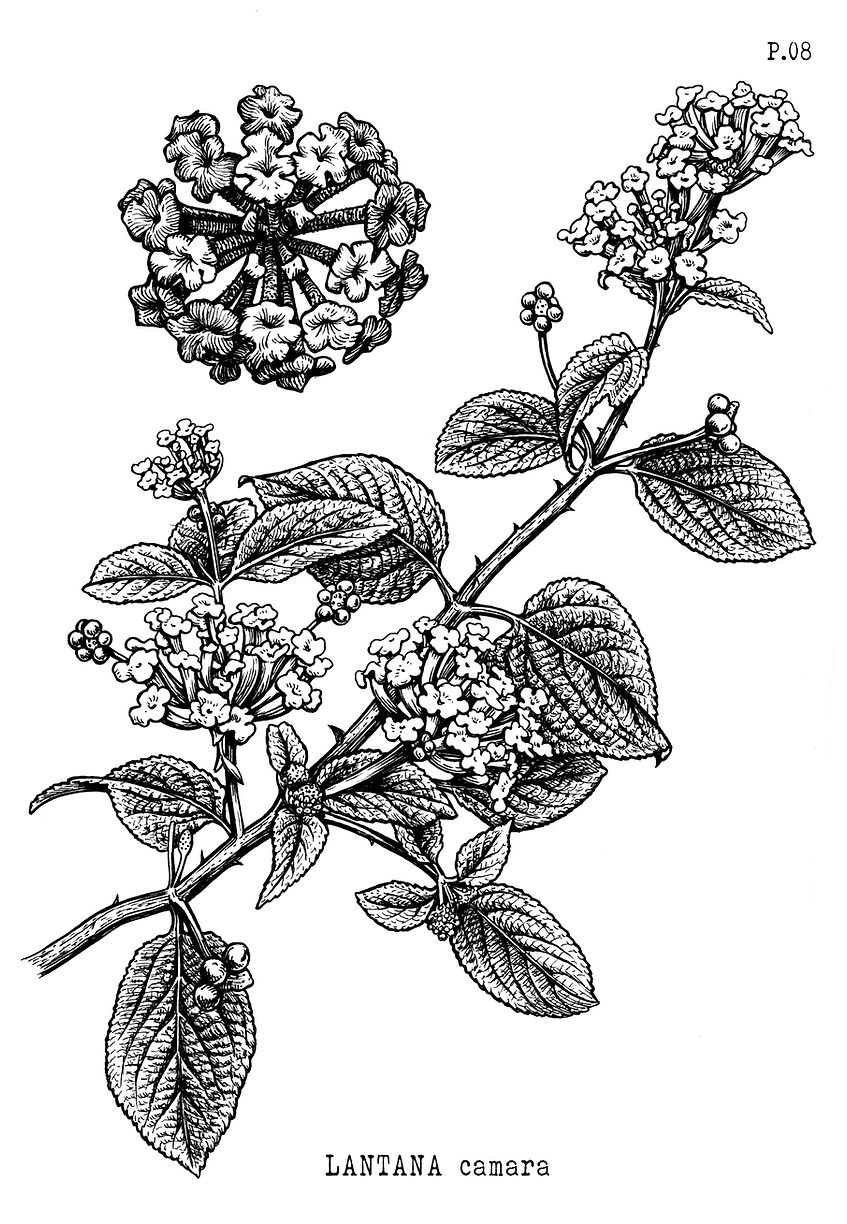
08 - LANTANA Lantana camara (VERBENACEAE)

08- Lantana - Lantana camara (VERBENACEAE)
Perennial, shrubby, erect, spiny, reaching 120 cm in height. Opposite leaves, ovate in shape and with an acute apex, rough and rough texture and characteristic aroma. Small flowers, usually yellow, orange or reddish, leaving in groups of the terminal axils of the branches, blooming all year round. Small, rounded fruits, greenish to black when ripe, drupe type, with two seeds.
Distribution: Native to Brazil, nowadays it has a cosmopolitan distribution and is considered invasive. In Portugal, it reversed colonization and became a plague in more than fifty countries, such as Spain, Italy, East and West Africa, Madagascar, Mauritania, North America, Caribbean, India, China, Asia, Australia and New Zealand. Horrible!
Situation in São Paulo: Fully used in landscaping, wild animals are reasonably common in vacant lots.
How to plant: You can buy it, take it out of the bag and plant it. Perpetuate the wild ones by collecting a branch and cloning the plant. I removed parts of an adult specimen in an old garden, in a demolished house. The situation was not ideal and the collection had to be done very quickly. It was not the best transplant, but after a few months the plants started to gain volume.
Uses:
ERASMUS, DJ, ET AL. CONTROL OF LANTANA CAMARA IN THE KRUGER NATIONAL PARK, SOUTH AFRICA, AND SUBSEQUENT VEGETATION DYNAMICS. BRIGHTON CROP PROTECTION CONFERENCE, WEEDS. FARNHAM, UK; BRITISH CROP PROTECTION COUNCIL (BCPC), VOL. 1: 399-404, 1993.
LORENZI, H. DANINE PLANTS IN BRAZIL: TERRESTRIAL, AQUATIC, PARASITE AND TOXIC. PLANTARUM INSTITUTE. NOVA ODESSA, SP, 4th ED. 2008. 672P. IL.
DOS SANTOS SILVA, TR; LIMA, CT FLORA OF BAHIA: VERBENACEAE: LANTANA. BIOLOGICAL SCIENCES SERIES SITIENTIBUS, V. 12, N. 2, P. 245-268, 2012.
SHARMA, OP; MAKKAR, HPS; DAWRA, RK A REVIEW OF THE NOXIOUS PLANT LANTANA CAMARA. TOXICON, V. 26, N. 11, P. 975-987, 1988.

Sou um parágrafo. Clique aqui para adicionar e editar seu próprio texto. É fácil.

A lantana é uma das poucas plantas do cerrado paulistano que são utilizadas em jardins e esta presente na memória visual de muitas pessoas.

É uma espécie muito típica de "jardins da vovó", ou jardins populares de bairro onde o paisagismo se forma á partir do que vai sendo plantando sem muito rigor na composição. Geralmente a escolha de espécies é feita na base de trocas e coleta de pequenos galhos cortados que são depois plantados diretamente no chão. Planta bem comum nas lojas.



